When Charla saw a video on social media about Trooper, a fluffy black kitten with cerebellar hypoplasia (CH), she was already familiar with the non-progressive neurological condition that affects balance and coordination.
“I had seen a video on YouTube about six months before even seeing Trooper,” explains Charla. “It was a heartwarming video of a dog that apparently watched over a cat that had the most adorable head wobble.”
After watching the touching video, Charla — a lifelong cat lover — wanted to learn more about cerebellar hypoplasia, so she began researching the condition. She learned that cats with cerebellar hypoplasia have underdeveloped cerebellums, which often results in a wobbly gait and head tremors, but they have normal life spans and aren’t in any pain.
“I also wondered why I had never seen anything like that before and quickly found out that CH kittens were often euthanized due to nothing more than ‘not walking normal,’ ” explains Charla. “This notion that ‘not normal’ is somehow considered less than hurt my heart.”
Consequently, when Charla saw the video of Trooper that was shared by Victoria Humane Society on Facebook in December 2014, she knew she would be able to give the adorable kitten a happy and loving home. Charla submitted an adoption application and even reached out to a friend who was connected to the rescue, and after waiting two very long days, she was invited to meet Trooper at his foster home.
View this post on Instagram
“I was told that his foster mom, Kimberly, would ultimately be the one making the decision if I could adopt him or not because she had had him since he was found abandoned in her friend’s barn and had grown very attached,” explains Charla.
View this post on Instagram
During the hour-long drive from her home on Vancouver Island to Kimberly’s farm, Charla was both nervous and excited to meet the fluffy four-month-old kitten. Over the course of two to three hours, Charla learned about Trooper and the special accommodations he would need to thrive, all while playing and cuddling with the adorable special needs cat. “Kimberly then let me know that she was comfortable with me adopting him and if I wanted to take him home that day, I could,” remembers Charla. “I cried and so did she.”
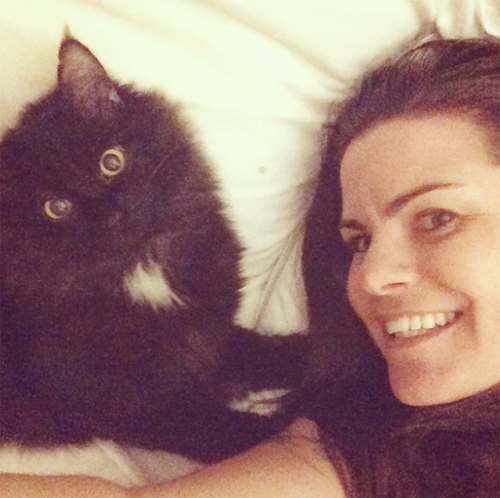
On December 17, 2014, Charla officially adopted Trooper, bringing him home to live with her. Thankfully, it didn’t take long for Trooper to adjust to his new environment, and because he was very mobile, Charla didn’t have to make a lot of special accommodations for him aside from buying a few rugs to cover her laminate floors and getting a ramp made for him to be able to climb on to her bed.
View this post on Instagram
“We in the CH community use a scale system to sort of identify where we feel our pets fall on the sliding scale,” says Charla. “Trooper’s CH, I feel, falls between moderate and severe.”
View this post on Instagram
While the exact cause of feline cerebellar hypoplasia is unknown, it is believed to occur in utero when a pregnant cat is vaccinated, exposed to a virus or toxin, or suffers some sort of trauma. “Unfortunately, due to the systemic euthanizing of CH cats up until fairly recently, there have not been a lot of studies on animals with CH,” says Charla. Despite the lack of knowledge about cerebellar hypoplasia, it was clear to Charla that Trooper was a very happy and active young kitten, and she was determined to do everything she could to raise awareness about this often misunderstood neurological condition.
View this post on Instagram
Less than two years after adopting Trooper, Charla was using social media to advocate for animals with cerebellar hypoplasia, as well as to educate the public about CH, when her beloved boy began having seizures in the summer of 2016. “It was the scariest thing I have ever had to sit through,” says Charla, “and you literally just have to sit through it. You feel helpless and ineffective.”
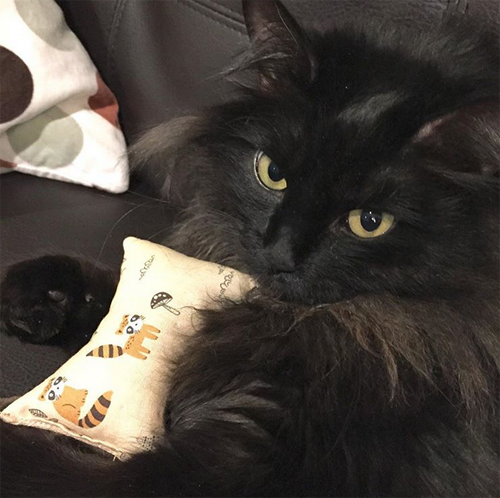
Trooper was having focal seizures — a type of seizure that affects one area of the brain — every hour, and when his symptoms didn’t improve after a week of anti-seizure medication, he was referred to a neurologist in nearby Vancouver. “The neurologist suggested we not jump right to the costly MRI but rather use ultrasounds and tweak his medications that he had started seven days earlier,” remembers Charla. “He stated if we saw something abnormal with the ultrasounds or med tweaking didn’t seem to help that we would then do the MRI.”
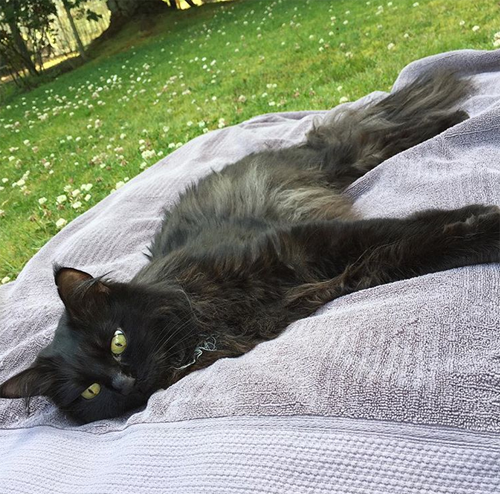
Two days later, Trooper’s seizures stopped completely, but he was out of sorts for six weeks as he adjusted to the medication. Three years later, he has only had one seizure, and while Trooper has to take anti-seizure medication twice a day, it doesn’t affect his quality of life. “I don’t even consider epilepsy a part of our lives,” says Charla. “Giving him his meds twice a day is so effortless and normal to me at this point.”
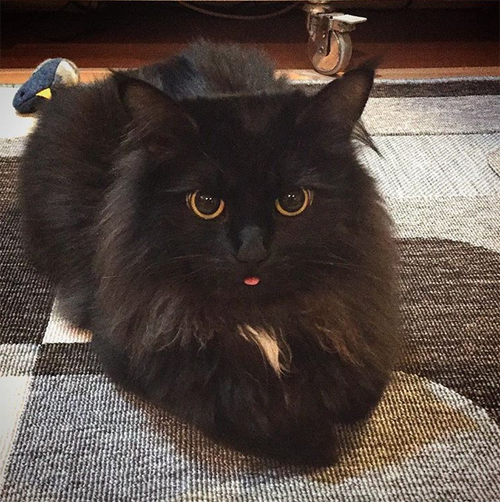
While no one knows the exact cause of Trooper’s epilepsy, his veterinarian and neurologist believe his seizures are unrelated to his cerebellar hypoplasia, something Charla — who now has two other CH cats, Sampson and Frankie — agrees with. “My other two CH cats do not have seizures,” says Charla.
View this post on Instagram
Unfortunately, after Trooper started having seizures, the people Charla had relied on to care for him in her absence understandably felt nervous about now having to also administer medication as well as oto recognize if he was having a seizure. As a result, Charla tried taking Trooper with her on vacation, something a lot of cats probably would have hated. Fortunately, this special boy loved it, and now Trooper and Charla regularly travel together, allowing this pair to form an even deeper and more meaningful bond.

“Having Trooper along with me for my road trips has been a bright spot in every trip he accompanies me on,” says Charla. “He loves his Sleepypod and just sleeps and purrs while we are on the road.”
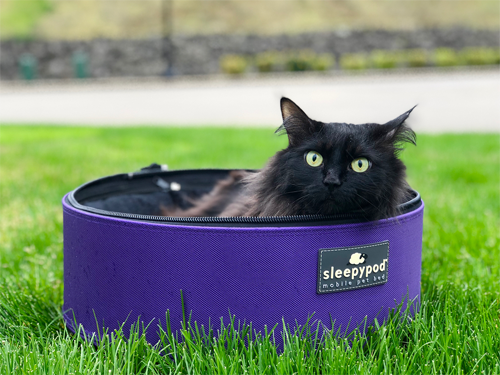
When he’s not traveling around the United States and Canada with his mom, Trooper loves spending supervised time outside. While he and his CH brothers wobble when they walk and fall over more than average cats, it’s obvious Trooper, Sampson, and Frankie have incredibly active and fulfilling lives, proving there’s no need to feel sorry for these obviously happy boys.
View this post on Instagram
“I wish that people could spend a week with Trooper and Sampson and Frankie to see the love that they put out to their world, the joy they get from prancing through the grass and pretending that they can catch birds and squirrels,” says Charla.
View this post on Instagram
After all, while Charla realizes people mean well when they express concern and pity for cats with cerebellar hypoplasia, it’s these sorts of sentiments that lead to otherwise healthy animals with the condition being put to sleep. “I fully understand that it is people showing care and concern, but it is this habit — rather than asking about what they are seeing and seeking knowledge — that perpetuates the continuation of CH animals being unjustifiably euthanized,” says Charla.
View this post on Instagram
She also hopes to raise awareness about feline epilepsy, especially about the importance of giving anti-seizure medications the time they need to work. “It breaks my heart when I hear about cats having cluster seizures like Trooper and seeing that the cat’s human provided the anti-seizure meds for three days and didn’t see any improvements so their vet recommended euthanasia,” explains Charla.
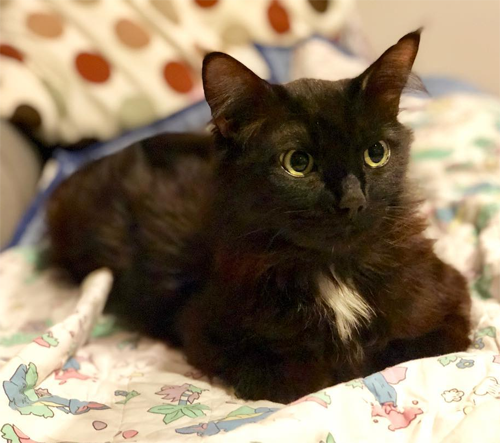
For Trooper, it took more than a week for the medications to kick in, and it was an understandably agonizing time for Charla. Thankfully, the neurologist urged her to give them the time they needed to take effect, and today Trooper is happy, healthy, and seizure-free!
View this post on Instagram
With Trooper by her side, Charla continues to educate others about cerebellar hypoplasia and feline epilepsy, because not only does she want to save the lives of cats who are often at risk of being put to sleep, she wants other people to experience the same joy and purpose this very special boy has given her. “He rescued me far more than I rescued him,” says Charla. “Trooper is my heart.”
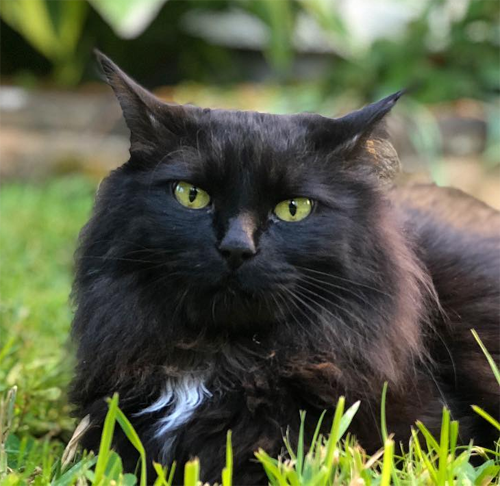
To learn more about this adorable cat, you can follow Trooper on Instagram.


